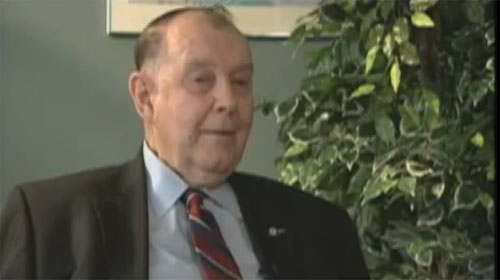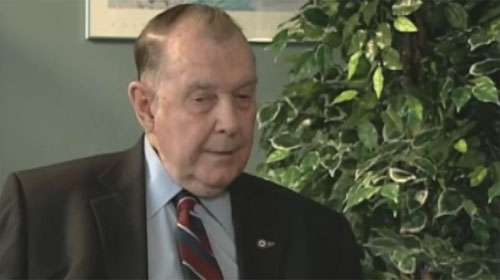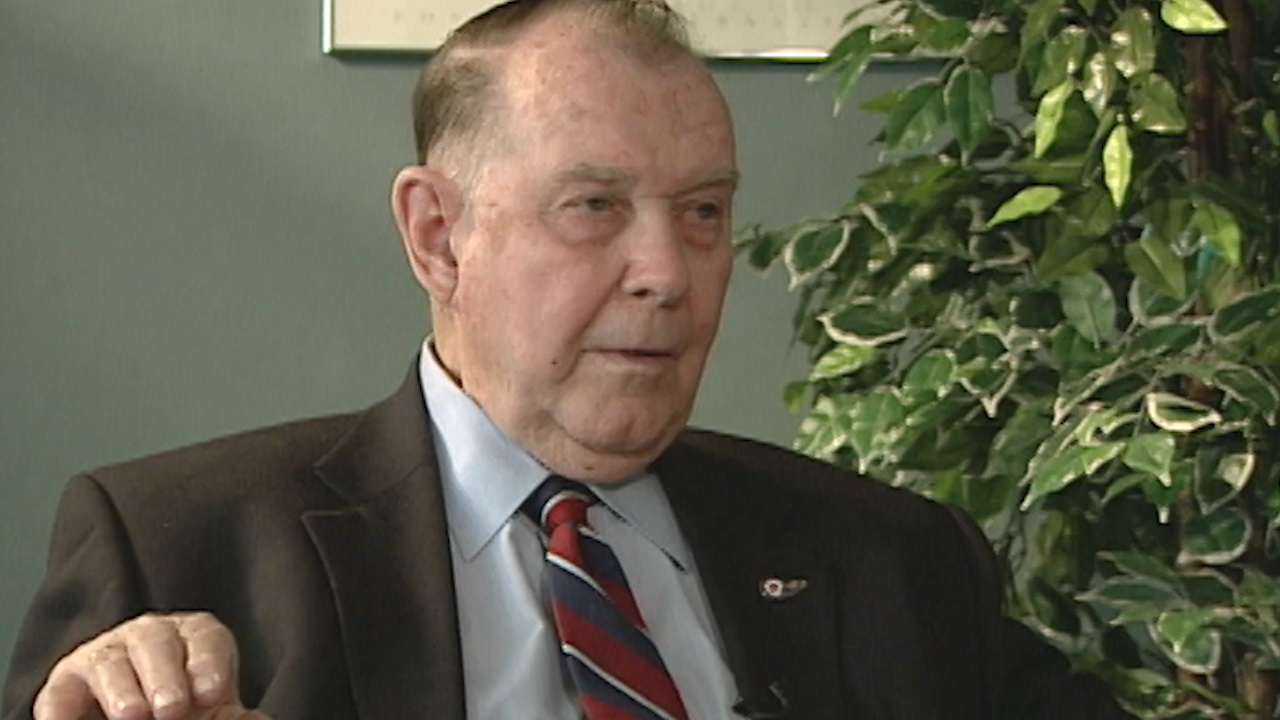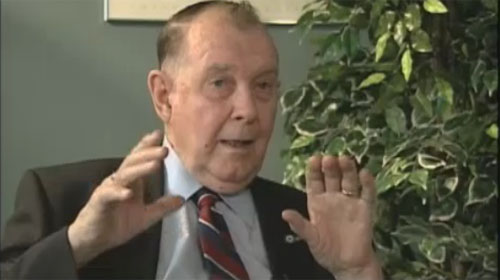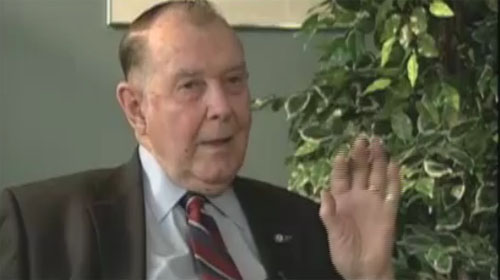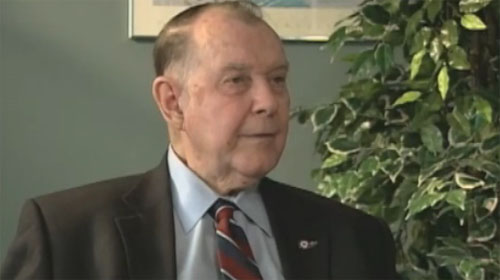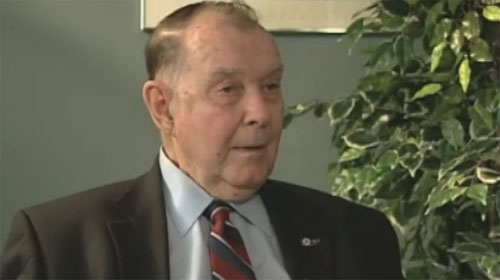The Spitfire
Heroes Remember
The Spitfire
Transcript
They referred to the Spitfire as a lady. And not delicate so
much as very light on the controls. And you actually put a
Spitfire on. It was that compact that some bigger fellas would
have trouble and if you were much over six feet your head would
be hitting the coupe top. And it had its idiosyncrasies but once
you were in the air it just was a delight to fly – very docile
and very forgiving. And yet it could out turn and all the rest
of it. Here again ... instructing in the Harvard ... flying a
lot from the backseat of the Harvard put you in a great – let’s
say position – to land the Spitfire because you had so much
motor up ahead of you. As you got into the others with the
bigger motor – the Spit 9 – you were sitting a long way back.
And because you learned to look out to the side and land from
the backseat of the Harvard that here again ... it helped a
tremendous amount. The Spitfire, when you sit back, you can’t
see straight ahead. And so you’d taxi this way back and fourth.
And in landing you did what we called a fighter pilot’s
approach. Basically you didn’t want to have your backside
exposed too long and so you did a curving approach in. You’d
come downwind, get your wheels down, your flaps, and you did a
curving approach in and straighten out just as you came to land.
But once you’re straightened out, you have to look out the side.
You can’t see straight ahead unless you’re gonna try and do a
wheels landing. But here again on a short runway ... and when we
got to Normandy you were landing on ... I think they had this
mesh that was 1200 metres or about 3600 feet. It wasn’t a lot of
room. And so you tried to do pretty well a three point landing
so you could get stopped in time. There’s nothing that could
stay with a Spitfire in a tight climbing turn. So that was your
safety belt. The closest was an ME 109G but the 190 couldn’t
turn with you and so on. So that was your safety valve. So in
combat because of your ... of this tight turn ... where if
you’re turning very sharply nobody can turn and get a shot at
you. I prefered my Spitfire for combat. We had 20 millimetre
cannons. We had two. The Spit 9, originally they didn’t. But
then by the time they got more with the bigger motor and that,
we had two 20 millimetre cannons ... one on each wing and we had
two 303 machine guns, two in each wing. So you had four machine
guns and 2 cannons. You could fire just the cannons alone, the
machine guns alone or both together. And the Hurricane actually
had four; eight machine guns ... 303s. But ... either or ...
when you fired those all at the same time it actually slowed you
up by about 35 miles an hour. You could feel it because there
was the...let’s say the... just the force of firing that all at
one time and they harmonized them out in front. Basically I
think the average (range) was about 300 yards. And you’d have a
cone about twelve feet across. George Burling, who was my flight
commander when I joined 412 squadron ... he had his cone about
three feet across because he was such a deadly shot. And that
meant that he only needed to fire at half second bursts and
that’s five, six shells and he’d be able to shoot down an
aircraft. We – the average guy – needed a much bigger pattern
and you’d compare that to a shotgun and this is how they do that
with a shotgun. So you have a pattern out there so far.
Description
Mr. Fox discusses the landing technique, manoeuvrability, and armaments of the Spitfire fighter.
Charley Fox
Mr. Fox was born in Guelph, Ontario in 1920. He signed up in March, 1940, and was called up the following October. Mr. Fox excelled during pilot training, but a bout of scarlet fever prevented him from accompanying his squadron overseas. Once returned to health, he became a flight instructor, during which time he married. A short time later, he was sent overseas and joined the 412 Spitfire Squadron. He was involved in air support for D-Day and flew many follow-up missions destroying “targets of opportunity” in France and Holland. After the war, Mr. Fox returned home and became a retailer. He now resides in London, Ontario.
Meta Data
- Medium:
- Video
- Owner:
- Veterans Affairs Canada
- Duration:
- 4:22
- Person Interviewed:
- Charley Fox
- War, Conflict or Mission:
- Second World War
- Location/Theatre:
- France
- Battle/Campaign:
- Normandy
- Branch:
- Air Force
- Units/Ship:
- 412 Spitfire Squadron
- Rank:
- Aircraftman 2nd Class / Flight Lieutenant
- Occupation:
- Pilot
Related Videos
- Date modified:



